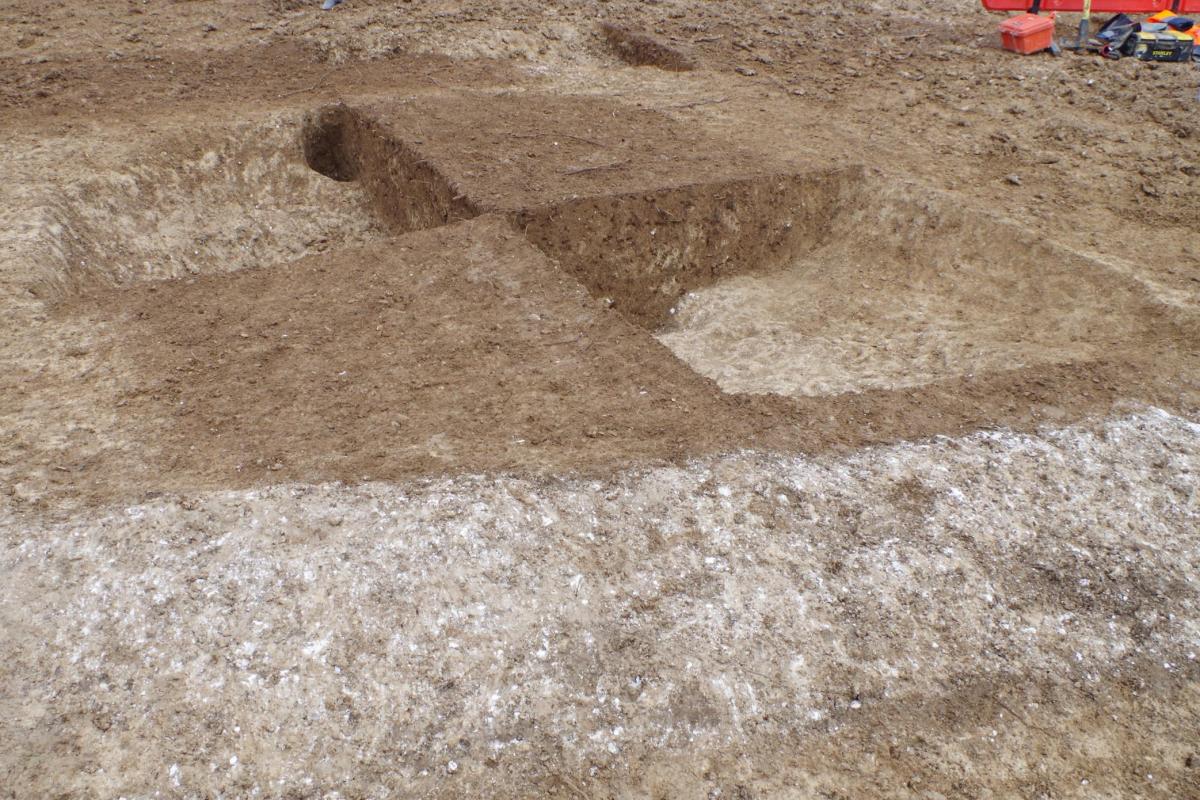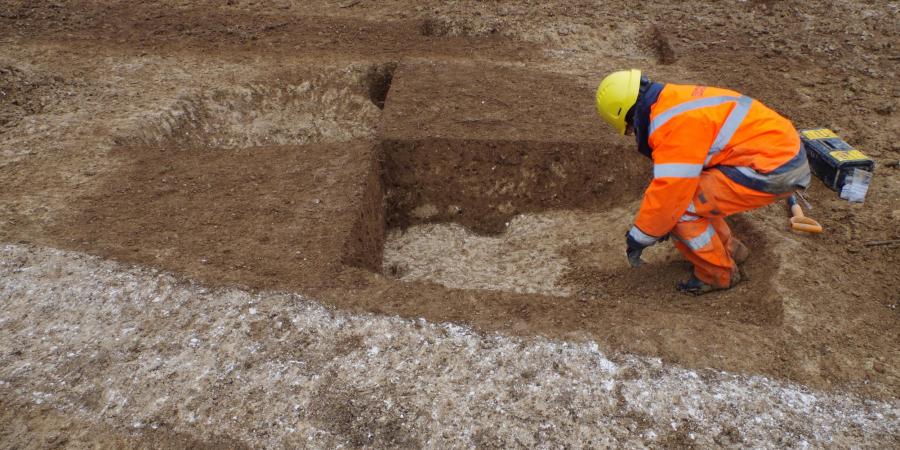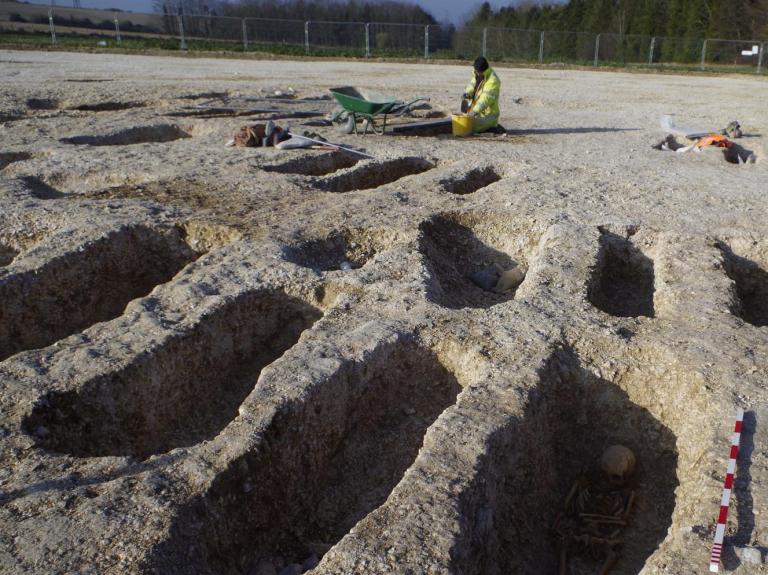Recent archaeological investigations undertaken close to the VCP2 entrance at Tidworth Camp, where highways construction works are underway for the Army Basing Programme (ABP), have revealed important prehistoric and Anglo-Saxon remains.
Part of a prehistoric enclosure ditch containing Late Bronze Age (1100 to 700 BC) and Early Iron Age (700 to 400 BC) pottery was identified, along with a sunken-featured building dating from the Anglo-Saxon period, which contained Early to Mid-Saxon pottery (AD 410 to 850) and an iron knife.

Ruth Panes, Project Manager for Wessex Archaeology, explained: “The building remains comprised a large rectangular pit and two substantial postholes cut into the natural chalk at either end. The holes would once have held timber posts to support a thatched roof. The walls are likely to have been of wood and a planked floor may have covered the pit, forming an air space below the floor and helping to keep the interior dry. The Anglo-Saxon remains are of particular interest as there is only limited evidence for settlement in Tidworth at this time.”
Earlier excavations by Wessex Archaeology revealed a Mid-Saxon cemetery containing the remains of 57 men, women and children, located approximately 700m to the south-east. This was unearthed during ABP works for new Service Families Accommodation (east of the A338 Salisbury Road). “This cemetery may have been where the inhabitants of the newly-discovered sunken-featured building at VCP2 were buried, on higher ground and in sight of their settlement close to the River Avon below,” explained Ruth.
Mark Duddy, ABP Programme Director, said, “It is fascinating to discover a little of the history of the defence landscape across Salisbury Plain Training Area, as we continue to transform it for the future long-term benefit of soldiers and their families.”

